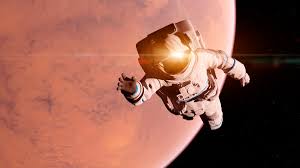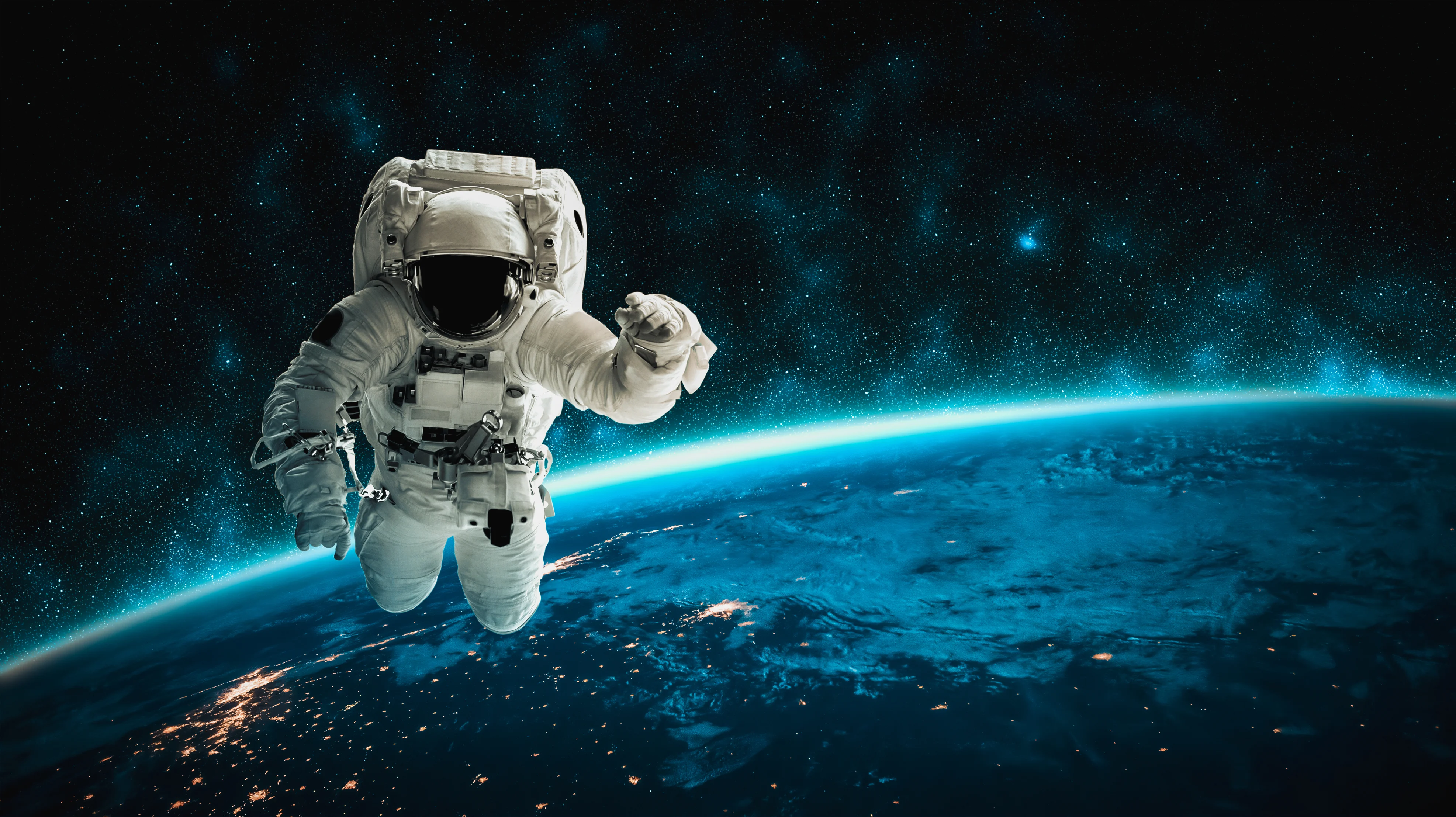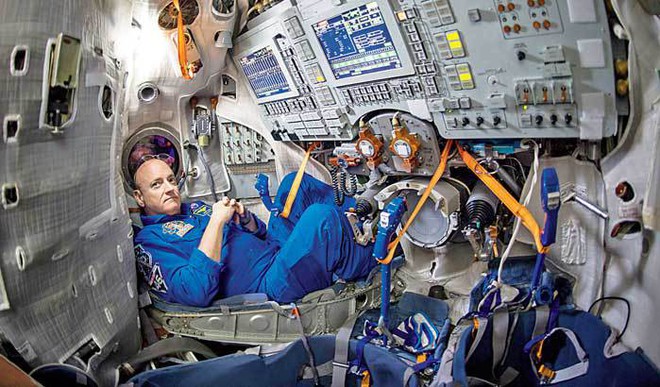
One of the most fascinating facts about human spaceflight is that astronauts grow taller in space. It sounds almost unbelievable at first, but this phenomenon has been confirmed repeatedly through experiments aboard the International Space Station (ISS) and other space missions. Without Earth’s constant pull of gravity compressing their bodies, astronauts can become up to 2 to 3 inches taller during their stay in space.
This change, however, is temporary. Once astronauts return to Earth, gravity resumes its effect, and their bodies gradually return to normal height. While it may sound like a harmless or even exciting side effect of space travel, this phenomenon is deeply connected to the way our bodies adapt to microgravity, and it has important implications for astronaut health, space exploration, and our understanding of human physiology.
In this article, we’ll explore:
Why humans get taller in space.
The role of gravity and the spinal column.
The effects of microgravity on the body.
What happens when astronauts return to Earth.
Health challenges connected to this phenomenon.
Implications for future long-term space missions.
The Role of Gravity on Earth
On Earth, gravity plays a continuous role in shaping and supporting the human body. Every moment of our lives, gravity exerts a downward pull that compresses the spine, joints, and cartilage. This compression is subtle but constant.
The human spinal column is made up of 33 vertebrae separated by intervertebral discs that act as cushions. These discs are flexible and filled with a gel-like substance, which allows for movement, shock absorption, and support. However, under Earth’s gravity, these discs are slightly compressed throughout the day. This is why most people are a little taller in the morning after lying down all night, as the spine decompresses during sleep. By evening, gravity compresses the spine again, leading to a slight reduction in height.
This daily fluctuation on Earth gives us a hint of what happens in space—but in microgravity, the effect is magnified dramatically.
Microgravity and the Human Body
When astronauts travel to space, they experience what scientists call microgravity. Most people mistake astronauts to be totally unaffected by gravity in their orbit but this is not true. The gravity of the Earth has still reached a vast distance into the skies, which explains why the International Space Station still rotates around the Earth. But the astronauts perceive themselves immersed in weightlessness due to constant free fall as they orbit Earth very rapidly.
This condition removes the downward compression force that gravity normally applies on the body. As a result, the spine and other parts of the skeleton are free to adjust in ways not possible on Earth.
Why Do Humans Grow Taller in Space?
The key reason astronauts grow taller in space lies in the decompression of the spinal column.
Spinal Elongation
Without gravity pulling down, the intervertebral discs expand, creating more space between each vertebra. This expansion lengthens the spinal column, which can add up to 2–3 inches to an astronaut’s height.
Relaxation of Muscles and Ligaments
On Earth, the spinal muscles and ligaments must constantly work against gravity to maintain posture. In space, this strain is removed, allowing the body to relax and extend more than it would under normal conditions.
Fluid Redistribution
Another factor contributing to the increase in height is the redistribution of bodily fluids. In microgravity, fluids that normally pool in the lower body shift toward the upper body and head. This redistribution causes some swelling, but it may also influence the intervertebral discs, enhancing their expansion.

Evidence from Astronauts
Multiple astronauts have reported noticeable changes in height during missions. For example:
NASA studies confirm that astronauts can grow 5–7 centimeters taller in space.
Some astronauts have described the sensation of their spines stretching, leading to discomfort and back pain during their missions.
Upon return to Earth, astronauts gradually lose the extra height within a few days to weeks as gravity resumes compression of the spine.
This phenomenon has been carefully documented with medical scans and physical measurements conducted before, during, and after missions.
Temporary Height Gain and Its Reversal
The height gain experienced in space is not permanent. Once astronauts land back on Earth, gravity immediately begins compressing their spines again. Within days, they return to their pre-flight height.
This temporary change may seem harmless, but it brings with it certain health challenges. When the spine elongates, it places stress on muscles, ligaments, and nerves that are not accustomed to the new posture. As a result, astronauts often suffer from back pain, sometimes severe, during their missions.
Health Challenges Linked to Spinal Elongation
Growing taller in space might sound like a dream come true, but for astronauts, it comes with real medical concerns:
Back Pain
Studies show that over 50% of astronauts report back pain during space missions. The pain is often caused by spinal elongation and weakened back muscles.
Muscle Weakness
Without gravity, spinal muscles that normally stabilize posture become weaker, making the back more vulnerable to injury.
Disc Herniation Risk
Returning astronauts face a higher risk of slipped or herniated discs, as the re-compression process on Earth puts pressure on expanded intervertebral discs.
Reduced Bone Density
Microgravity also causes a loss of bone density, which, combined with spinal changes, may increase the risk of fractures or long-term musculoskeletal problems.
Implications for Long-Term Space Travel
The fact that humans grow taller in space is more than just a curious fact—it has serious implications for future missions, especially those to Mars or beyond.
Spacesuit Design: Spacesuits are custom-made to fit each astronaut’s body. Changes in height can affect how the suit fits, potentially causing discomfort or limiting mobility.
Spacecraft Ergonomics: Seats, sleeping quarters, and workstations inside spacecraft are designed based on an astronaut’s Earth height. Unexpected changes may create ergonomic challenges.
Health Monitoring: Long-term spinal elongation and the associated back problems could affect astronauts’ ability to perform tasks on long missions.
Post-Mission Rehabilitation: Once astronauts return to Earth, they need rehabilitation programs to restore muscle strength and spinal stability.
Comparison with Other Space-Related Body Changes
Height increase is just one of many physical adaptations astronauts undergo in space. Others include:
Fluid Shifts: Astronauts often appear “puffy-faced” due to fluid moving to the upper body.
Bone Loss: Weight-bearing bones lose density at a rate of about 1% per month in space.
Muscle Atrophy: Muscles weaken without constant use against gravity.
Vision Problems: Fluid pressure in the head can affect vision, leading to a condition known as spaceflight-associated neuro-ocular syndrome (SANS).
Together, these changes demonstrate how deeply gravity influences our bodies—and how challenging it is to adapt to space.

Historical Perspective: When Did We Learn This?
The discovery that humans grow taller in space dates back to the early days of space exploration. During the Skylab missions in the 1970s, astronauts first reported back pain and measured increases in height. Since then, every major space program—NASA, Roscosmos, ESA, and others—has confirmed and studied this effect.
Modern technology, such as MRI scans conducted before and after missions, has allowed researchers to understand the underlying spinal mechanisms more precisely. The continued interest in this area reflects not only its impact on astronaut health but also its importance for long-term human space exploration.
What This Teaches Us About Human Physiology
The fact that humans grow taller in space reveals how dynamic and adaptable our bodies are. Gravity has shaped our biology for millions of years, so removing it unveils aspects of our physiology that remain hidden on Earth.
It teaches us that:
The spine is more flexible and expandable than we often realize.
Gravity plays a major role in musculoskeletal health.
Space research can offer new insights into medical conditions on Earth, such as back pain, disc problems, and osteoporosis.
Returning to Earth: Readjustment Phase
When astronauts return to Earth, they go through a period of readjustment. Their spines re-compress, their muscles must work against gravity again, and their balance systems re-adapt. Rehabilitation programs focus on strengthening muscles, restoring bone density, and helping astronauts cope with spinal compression.
While the height gain disappears, the experience provides valuable lessons about how fragile and adaptable the human body truly is.
Looking Ahead: Future Research
As space agencies prepare for longer missions to the Moon and Mars, research on spinal elongation will continue. Scientists aim to:
Develop exercise protocols that protect spinal health in space.
Improve spacesuit and spacecraft designs that account for changes in height.
Explore medical treatments to reduce the risk of back pain and disc injuries.
Use insights from space medicine to improve healthcare on Earth.
Summary
The fact that humans grow taller in space is more than just a quirky trivia fact—it is a window into the incredible adaptability of the human body. By removing gravity, we expose the hidden flexibility of the spine and uncover new challenges for health and comfort.
For astronauts, this temporary height gain comes with real risks, including back pain and disc problems. For scientists, it offers valuable insights into spinal health and the role of gravity in shaping our bodies. And for the future of humanity, it highlights the importance of preparing carefully for long-term space travel.
So, while becoming taller in space might sound like a bonus perk of being an astronaut, it is, in reality, a reminder of just how interconnected we are with Earth’s gravitational pull. As we look toward Mars, deep space, and beyond, understanding these changes will be key to ensuring safe and sustainable exploration.







